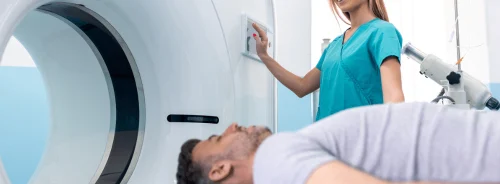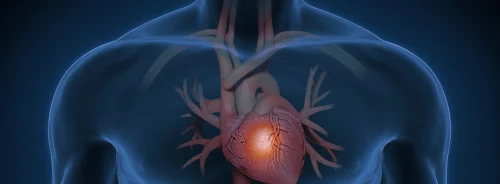Cardiovascular diseases remain a leading cause of mortality globally, necessitating advanced diagnostic techniques for early detection and treatment. Late gadolinium enhancement (LGE) cardiovascular magnetic resonance (CMR) is a widely accepted method for assessing myocardial scarring, often caused by ischemic heart disease. While manual analysis of LGE CMR is effective, it is time-consuming and subject to observer variability. Therefore, automating scar quantification using artificial intelligence (AI) models offers a solution to improve accuracy and efficiency. However, AI models are sensitive to "domain shifts," where performance deteriorates when applied to data from different sources or institutions. This article discusses how unsupervised domain adaptation, specifically through CycleGAN models, can enhance the generalisation of AI-based scar quantification in clinical settings, even when applied to datasets from different sources or acquisition techniques.
Unsupervised Domain Adaptation in Myocardial Scar Quantification
Automating myocardial scar quantification has long been a goal in cardiovascular imaging, given the manual labour and time required for accurate diagnosis. The development of AI models trained on publicly available datasets, such as the EMIDEC dataset, has shown promise. However, the challenge is that LGE CMR images can vary significantly between institutions due to differences in acquisition parameters, magnetic field strength, and even the type of contrast agents used. These differences can result in a "domain shift," reducing the effectiveness of AI models when they are applied to clinical data that differ from the training data.
To address this challenge, the study proposes using Cycle-consistent Generative Adversarial Networks (CycleGANs) to perform unsupervised domain adaptation. CycleGANs are adept at translating image appearances from one domain to another without requiring paired datasets. In the context of myocardial scar quantification, this technique allows AI models trained on a specific dataset to be applied effectively to new data from different sources. In this case, a CycleGAN was trained to transform the appearance of local LGE CMR data to match the characteristics of the public EMIDEC dataset. This transformation facilitates the application of pre-trained AI models to local clinical data, thereby reducing the manual labour required for retraining.
AI-Driven Pipeline for Scar Quantification
The AI-based pipeline for myocardial scar quantification consists of three primary steps: myocardium segmentation, scar segmentation, and scar burden computation. These steps are performed sequentially to quantify myocardial infarction accurately. Initially, a bounding box regression network detects the heart within the images. Following this, a U-Net model is employed for the myocardium segmentation, which outlines the endocardial and epicardial boundaries of the heart. A separate U-Net model is used for scar segmentation, which identifies areas of scarring based on predefined signal intensity thresholds.
Incorporating domain adaptation through CycleGANs ensures that the input data, regardless of its original source, matches the format and appearance of the data used to train the AI models. The unsupervised nature of CycleGAN-based adaptation ensures that no additional manual labelling or training is required, making it a highly efficient method. In testing, the performance of this AI-driven pipeline was comparable to manual segmentation, with Dice similarity coefficients (DSC) between manual and AI-generated results being approximately 0.76 for myocardium segmentation and 0.75 for scar segmentation.
Clinical Validation and Challenges
The study validated the performance of the AI-driven pipeline on an external dataset comprising 44 patients undergoing LGE CMR scans for ischemic scar assessment. Despite differences in acquisition parameters, the pipeline demonstrated reasonable accuracy when applied to this new dataset. Bland-Altman analysis indicated minimal bias in scar burden quantification, with a mean bias of -0.62% between AI-predicted and manually quantified scar burdens.
However, the performance of the pipeline in detecting scar tissue was slightly reduced in pathological scans, with a DSC of 0.41 ± 0.12 for scar segmentation. This variability is attributed to the smaller size of the scar regions in comparison to the myocardium, making the AI segmentation more sensitive to slight misalignments. Furthermore, patients with no scar produced perfect segmentation scores, potentially skewing the overall DSC value. Despite this, the pipeline's automated scar burden quantification was considered clinically viable, offering a more reproducible and time-efficient alternative to manual methods.
A key challenge in implementing this technology on a larger scale is its performance consistency across different domains. Although CycleGANs effectively translate image appearances between domains, some performance degradation remains. Further work is required to improve the robustness of domain adaptation techniques, particularly when applied to more complex and varied datasets.
Conclusion
The use of unsupervised domain adaptation, particularly through CycleGANs, shows great potential for facilitating the clinical deployment of AI models trained on public datasets for myocardial scar quantification. By translating local clinical data to match the characteristics of a public dataset, it becomes possible to apply pre-existing AI models without additional training. This approach significantly reduces manual labour, enhances the efficiency of myocardial scar quantification, and opens up possibilities for large-scale automated cardiovascular imaging.
While the current results are promising, further work is necessary to refine domain adaptation techniques and validate the pipeline across larger, more diverse patient populations. Once optimised, this technology could improve the accuracy and speed of myocardial infarction diagnosis, ultimately contributing to better clinical outcomes for patients with cardiovascular disease.
Source: European Radiology Experimental
Image Credit: iStock






